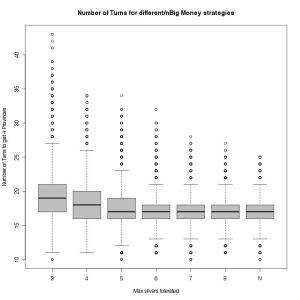Home-court advantage. "They should win the next since they're playing at home." "They managed to steal one on the road."
But doesn't it all come down to Team A versus Team B? If A is a better team it should win no matter the location. The court has the same dimensions, the baskets are identical, the shots have the same likelihood of falling in. It's not like being server or receiver in a tennis game.
Or is it? There has actually been quite some studies around home-court advantage in an attempt to tease out the external factors that could cause it. Many potential causes have been brought forward: the home crowd of course, cheering when the hometeam gains momentum. The fact that the players in the home team can sleep at home instead of being in a hotel. Familiarity with the locker rooms, the facilities in general. Mostly psychological explanations difficult to accurately measure.
Or just consider the distractions when shooting free-throws:
I don't have a degree in psychology so I will tackle from the data point of view, and try to see how playing at home can impact the game's outcome.
Data
I looked at all NBA games (regular season only) for the past two years. I didn't go further back as other factors could have come into play such as the differences in team composition.
Methodology
For each team, and for the league in general, I computed the empirical probabilities of winning at home and on the road. The values can be directly computed form the creation of a two-by-two table win/loss VS home/away. I choose to approach the problem via a logistic model which provides exactly the same point estimates but in addition provides confidence intervals which in turn allow me to determine whether the homecourt advantage is significant or not.
Results
If an NBA team plays against another NBA team, how does the probability of victory change depending on where the game is played?
With a simple model where the only variable is where the geme is played I obtained that for the NBA in general, playing at home offers a +19.8% winning probability (59.9% VS 40.1%). This was a very significant uplift. There we have it, homecourt advantage is very present in the NBA.
Does this +20% hold for all NBA teams?
Here the variability is much greater, ranging from +37.8% for the Denver Nuggets (81.7% at home vs 43.9% away) to only 2.4% for the Dallas Mavericks (69.5% at home VS 67.1% away).
Full team-by-team table is at the end of the post.
Does any team player better away than at home?
No, all teams play better at home, even if by only a little such as the Dallas Mavericks where the uplift is only 2.4%.
Is homecourt advantage statistically significant for all teams?
Homecourt advantage was significant for all teams except 8: Dallas Mavericks (+2.4%), Miami Heat (+3.7%), Boston Celtics (+9.8%), Philadelphia 76ers (+9.8%), Oklahoma City Thunder (+11.0%), Sacramento Kings (+11.0%), Houston Rockets (+13.4%), New York Knicks (+13.4%). These are not necessarily all good or bad teams, just teams that are just as good (or bad) away as at home.
Closing thoughts
Going back to Denver and its overwhelming homecourt advantage (+37.8%) compared to the second-best advantage +32.9% for the Los Angeles Clippers, what might wonder if the altitude isn't the Nuggets biggest fan...
In a later post I will explore how the model can be tweaked to take rest time between games into account. Does more rest improve your winning probability?
Appendix: Full table
| Team | Home win % | Away win % | Delta % | Significance |
|---|---|---|---|---|
| DAL | 69.5% | 67.1% | 2.4% | No |
| MIA | 65.9% | 62.2% | 3.7% | No |
| BOS | 69.5% | 59.8% | 9.8% | No |
| PHI | 46.3% | 36.6% | 9.8% | No |
| OKC | 69.5% | 58.5% | 11.0% | No |
| SAC | 35.4% | 24.4% | 11.0% | No |
| HOU | 58.5% | 45.1% | 13.4% | No |
| NYK | 50.0% | 36.6% | 13.4% | No |
| MIN | 26.8% | 12.2% | 14.6% | Yes |
| CLE | 57.3% | 40.2% | 17.1% | Yes |
| LAL | 78.0% | 61.0% | 17.1% | Yes |
| POR | 68.3% | 51.2% | 17.1% | Yes |
| UTA | 64.6% | 47.6% | 17.1% | Yes |
| ORL | 76.8% | 58.5% | 18.3% | Yes |
| PHO | 67.1% | 47.6% | 19.5% | Yes |
| NBA | 59.9% | 40.1% | 19.8% | Yes |
| CHI | 73.2% | 52.4% | 20.7% | Yes |
| NJN | 32.9% | 11.0% | 22.0% | Yes |
| ATL | 70.7% | 47.6% | 23.2% | Yes |
| DET | 46.3% | 23.2% | 23.2% | Yes |
| MIL | 61.0% | 37.8% | 23.2% | Yes |
| SAS | 79.3% | 56.1% | 23.2% | Yes |
| MEM | 64.6% | 40.2% | 24.4% | Yes |
| TOR | 50.0% | 25.6% | 24.4% | Yes |
| NOH | 63.4% | 37.8% | 25.6% | Yes |
| WAS | 42.7% | 17.1% | 25.6% | Yes |
| IND | 57.3% | 26.8% | 30.5% | Yes |
| CHA | 63.4% | 31.7% | 31.7% | Yes |
| GSW | 53.7% | 22.0% | 31.7% | Yes |
| LAC | 53.7% | 20.7% | 32.9% | Yes |
| DEN | 81.7% | 43.9% | 37.8% | Yes |













